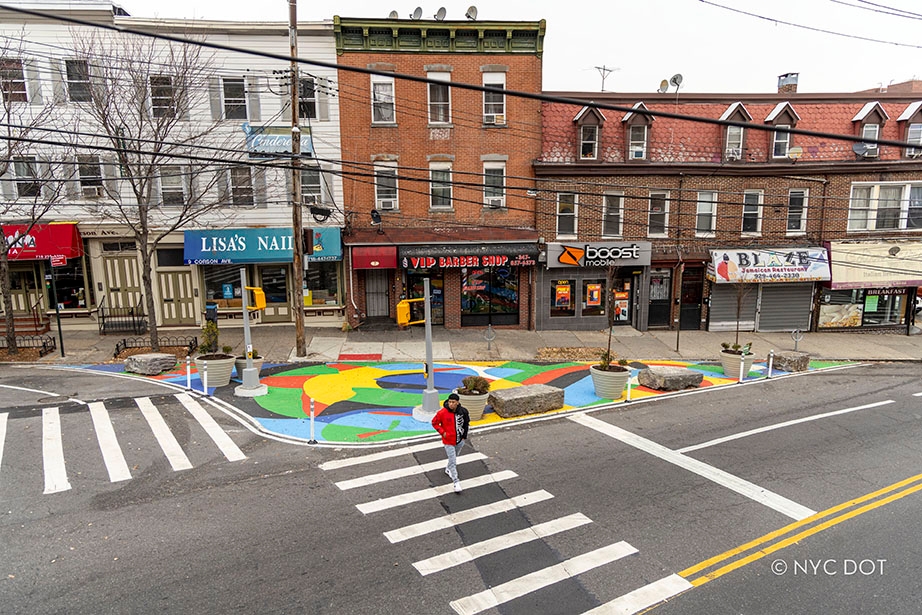Color Surface Treatments (CST) are any treatment that alters the color of the roadway to visually delineate the roadway surface for designated uses and serve as a guide to all road users.
Generally, color surface treatments are used to delineate pedestrian areas, bike lanes, and bus lanes.
*These treatments are installed and maintained by DOT or DOT-approved contractors. All installations are subject to DOT oversight to ensure compliance with design and performance standards.
Pedestrian Areas

Clinton Avenue and Fulton Street, Brooklyn

34th Avenue and 70th Street, Queens

Victory Boulevard and Corson Avenue, Staten Island
Bike Lanes

Frankfort Street, Manhattan

9th Avenue, Manhattan

West Village, Manhattan
Bus Lanes

Queens

Riverside Drive, Manhattan

West Village, Manhattan
Benefits
- These markings effectively mitigate conflicts, enhance efficiency, and bolster overall safety
- Significantly enhance safety, mitigate congestion, and cultivate a more streamlined and effective transportation system
- Functioning as visual indicators of road layout and potential dangers, they adeptly manage traffic flow and guide users
- Play a pivotal role in protecting pedestrians and micro-mobility users by providing tailored areas that meet their needs and a safe journey for everyone
Considerations
- Follow established industry standards and local regulations
- Color Surface Treatments need to be durable and long-lasting, so they do not fade or wear away quickly
Application
- See Color Surface Treatments Table for specific application guidance
- Asphalt Art may be used in-lieu of Color Surface Treatments for pedestrian space based on approval by DOT Art and an engineering review. See DOT Art Program
- Markings should be applied consistent with the MUTCD, unless otherwise approved by DOT
Design
Specification source: DOT Standard Specifications Section 6.44 CST
- Color Surface Treatment for Bicycle Lanes, Bus Lanes and Walking Facilities
- Resin Bonded Stone Surfacing
Detail source: DOT Typical Pavement Marking Details TBL-2, TBUS-1, and related
- Follow established industry standards and local regulations
Maintenance
- DOT generally maintains this material
- Regular maintenance and inspection are necessary to ensure they remain visible, legible, and effective in guiding drivers and pedestrians
Color Surface Treatments Table
|
As of June 5, 2024 |
Spread-Applied Markings (methyl methacrylate) | Spread-Applied Markings (epoxy gravel) |
|---|---|---|
| Ideal Application |
|
|
| Ideal Surface |
|
|
| Advantages |
|
|
| Disadvantages |
|
|

